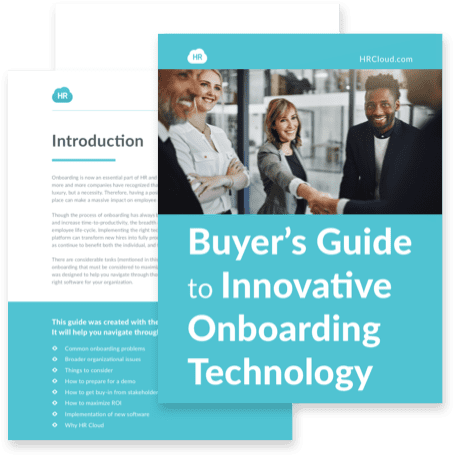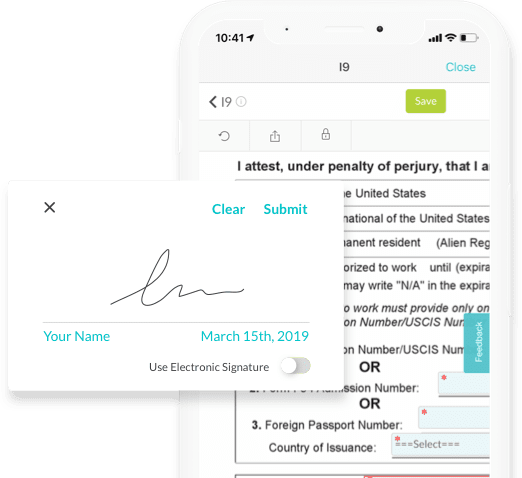The Best Practices to Create and Implement a Winning 1099 Onboarding Strategy



 Cut onboarding time
by 60%—here's the
Ultimate Checklist
that helped do it.
Cut onboarding time
by 60%—here's the
Ultimate Checklist
that helped do it.

Today, the combination of the Gig Economy and the red-hot job market has led to a new dynamic in the way we once viewed “work as usual.” Specifically, more and more workers are abandoning traditional employee-employer relationships, choosing instead to strike off on their own as independent consultants, contractors, and freelancers.
Companies of all sizes are doing all they can to tap into this growing labor pool. Working with a 1099 employee or even teams of freelancers delivers a number of compelling business benefits. Yet at the same time, using freelancers may also present specific challenges. One way to overcome them is through a well-defined, consistent, and effective onboarding process.
If you’re suddenly thinking, “Does my company have a good approach to onboarding freelancers?” don’t worry. We created this resource guide to deliver tips, tricks, and best practices to create and implement a winning 1099 onboarding strategy.
A Valuable Resource
Freelancers, consultants, and other types of 1099 employees can be a great resource in helping your company achieve its most critical objectives while delivering many important benefits:
1. Cost savings
Employing a freelance workforce is generally less expensive than permanent employees who receive salary, time-off, benefits, and other perks as part of their overall total compensation. Additionally, companies may benefit from not having to provide additional office space, laptops, phones, and other technology. All of this helps keep costs low.
2. Greater flexibility
Freelancers enjoy greater flexibility, but this benefit extends to the company, too. In many cases, a single freelancer (or an entire team) may be brought on for a specific assignment, allowing the company to free up or reassign existing employees to other projects. If the company chooses, they can part ways with the freelancer as soon as the project is completed or reassign them to another project. In this example, using freelancers gives the company maximum flexibility and control.
3. Less paperwork
Besides the 1099 form, there aren’t that many forms or reports that are required to complete. Freelancers generally don’t complete benefits documents, payroll deduction forms, employee profiles, and so many other documents that HR must then store and manage. Additionally, the company doesn’t have to track ongoing events throughout the employee lifecycle, such as certifications, training, compliance, and more.
Yet while the freelancer may not be part of the official workforce, she still will play an extremely important role within your company. As a result, you need to do all you can to save time, increase productivity, and give her all the information and resources she needs to succeed. All of this is crucial in making each freelancer feel like part of the team and that their efforts are contributing to the company’s goals and objectives.
To accomplish these goals, your company should pay careful attention to how it onboards freelancers and other 1099 employees, and that any onboarding process contributes to the highest levels of engagement, communication, and productivity possible.
To help, we offer the following best practices in developing a winning onboarding process for 1099 employees.

This guide was designed to help you navigate through those difficult tasks and help determine the right software for your organization, download our ebook now.
Download nowCommunicate and Share the Right Level of Information
Part of the onboarding process is related to how much (or how little) proprietary information is shared with each freelancer, which may include a non-disclosure agreement.
Plan to share standard, non-confidential information with any freelancer during the onboarding process. For example, explaining your company’s brand, core values, mission, and goals can help a freelancer get up to speed faster while quickly assimilating with your corporate culture. Many leading onboarding solutions offer the ability to create personalized portals where new hires can access internal documents, helpful resources, and other non-sensitive internal documents.
Make Introductions
This may seem like an extra step, but it’s important to introduce freelancers and share important details about them, such as their resume, experience, qualifications, and skills. Onboarding technology makes this part of a natural process by letting the freelancer complete their own profile and sharing their information with the entire team.
“As soon as we saw HR Cloud’s Onboard demo, we knew this was the perfect solution for us. We loved that it was extremely simple and powerful out of the box, but that we could customize it with advanced capabilities to make it work in our company setting.”

Get the Documentation You Need
If freelancers have submitted an official estimate, proposal, or statement of work (SOW), or non-disclosure agreement, your company should have this on day one (if not beforehand).
Many onboarding solutions let HR teams start working with new hire 1099 employees before they even start, thanks to functionality such as customized checklists and automated workflow emails. They can even build task checklists for certain events, such as receiving a SOW before the employee starts, to make sure nothing is missed.
Give Remote Employees What They Need to Succeed
It’s possible that your freelancers may work remotely and may never even visit the office. Here, the issue is engagement and how to manage these employees to ensure they are happy, motivated, and have everything they need to do their job effectively.
Onboarding solutions start the process by giving them all the information they need to get started but also offer integrations to employee engagement and communication platforms to make sure they’re always informed— no matter where they might be.
Plan for Collaboration
Onboarding a 1099 employee should also pave the way for successful interactions and collaboration with the project team. This is true for any onboarding process, but it is equally important when working with freelancers. Even though freelancers are not a permanent part of the organization, you should still try to introduce them in the same way you would a “real” employee and make it clear what they will be working on.
You should also appoint a team member as the official point of contact for the freelancer. This employee can show the freelancer around the building, make introductions, and serve as the “go-to” for questions or concerns. All of this helps break down potentially uncomfortable interactions and best positions the freelancer for success right out of the gate.
Be Ready on the First Day
Assuming a freelancer will be working on site, it is essential that everything is ready for the employee to start work immediately. Remember, freelancers are generally paid by the hour—and tend to earn more than a true employee per hour—so if this individual is wasting time reading manuals or other ways to slowly get started, you’ll waste precious budget.
All of the necessary tools a freelancer needs to be productive should be ready for them on day one. This may include a place to work, a laptop, and more, all of which may require cross-department planning and execution.
This can also include facility, both in terms of badge to access the physical building and facilities as well as access controls to digital information. All this needs to be planned, coordinated, and delivered on the new hire’s first day.
Plan for Goodbyes
Remember a freelancer does not expect that their assignment will turn into a full-time position, which means there will be a point in time when he is going to leave. A good way to deal with this is to include exit information as part of the onboarding process. For example, you can tell the employee the length of the contract, or when you anticipate that their services will no longer be needed. Freelancers appreciate this information so they can find their next opportunity.
Plan for Success with the Right 1099 Onboarding Process
While freelancers represent a new approach to business as usual, they can still benefit from many of the same approaches you would use with permanent employees, especially onboarding. Today, the most effective onboarding processes help integrate freelancers into the work environment so they can get up to speed and right to work. More, successful freelance onboarding processes help avoid small bumps in the road and foster ongoing communication, engagement, and collaboration.
About Author: This article is written by a marketing team member at HR Cloud. HR Cloud is a leading provider of proven HR solutions, including recruiting, onboarding, employee communications & engagement, and rewards & recognition. Our user-friendly software increases employee productivity, delivers time and cost savings, and minimizes compliance risk.

Keep Reading
AI for Frontline HR: Moving Beyond Sentiment Analysis to Build Tomorrow's Workforce Management Engine
TL;DR: While most organizations limit artificial intelligence in human resources to basic
How to Onboard Nurses and Clinical Staff Without Burning Out Your HR Team
Healthcare HR teams spend up to 57% of their time on administrative tasks, and onboarding
The Definitive Guide to Onboarding Field & Clinical Staff in Healthcare (2026)
Key findings covered in this guide:
The turnover crisis: 58% of nurses report burnout
Like What You Hear?
We'd love to chat with you more about how HR Cloud® can support your business's HR needs. Book Your Free Demo

Build a Culture of Recognition. Boost Engagement. Guaranteed.
Workmates empowers employees to stay informed, connected, and appreciated—whether they’re on the front line, in the office, or remote. Recognition drives 12x higher engagement.Trusted by industry leaders in every sector




Cut Onboarding Costs by 60%.
Take the confusion and follow-ups out of onboarding with automated workflows, digital forms, and structured portals—so new hires ramp faster 3X quicker.Trusted by industry leaders in every sector





